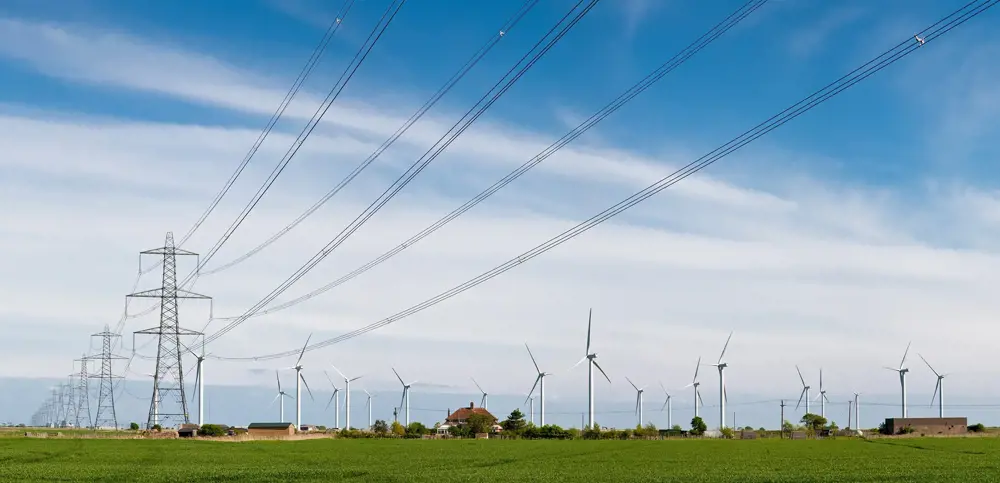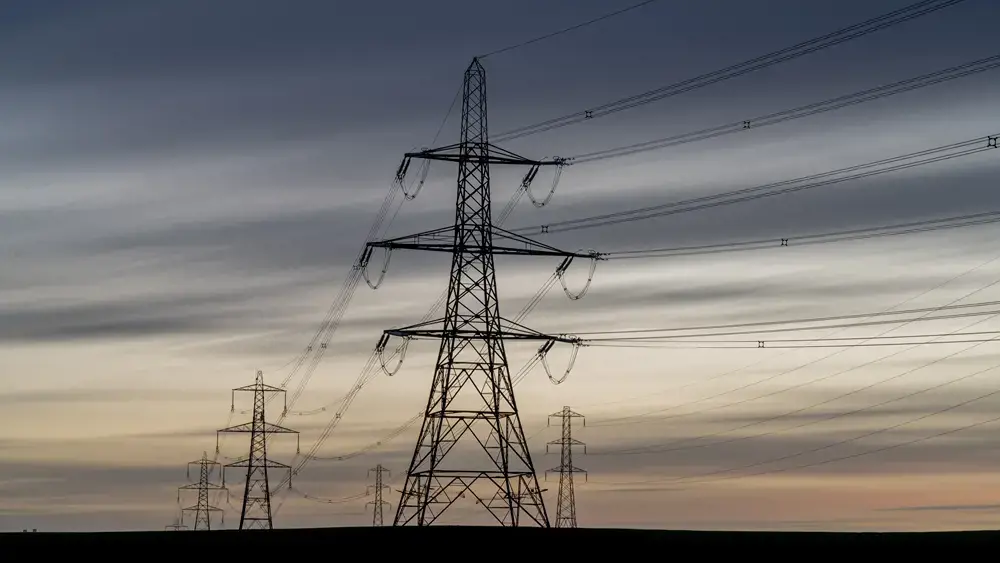Victoria Parrett, Public Affairs Manager
28/04/2025 | Energy markets


Zonal pricing is a political distraction, rather than a solution to the problem of high energy bills
July 2025 update:
The Government has now confirmed its decision not to go ahead with zonal or regional electricity pricing, and will instead pursue reforms to the national pricing electricity market.
28 April 2025
If rumours are true, the Government is soon to make a huge decision about the future of the British electricity system. Through REMA (the Review of Electricity Market Arrangements), the Government is deciding whether to switch England, Scotland and Wales from a national electricity market to a zonal electricity market. It’s being referred to as potentially the most radical reform to the market since privatisation.
Under a zonal market, areas with high energy production and low demand from consumers (such as northern Scotland) would pay far less for electricity than places with low energy production and high consumer demand (such as southern England) – with a scale of differing prices in between. The intent of this change, if it happens, would be to encourage electricity intensive businesses and households to base themselves in areas with lower prices, to use up the electricity, reduce constraint costs on the system and reduce the demand for grid buildout. It’s argued that it could also encourage the building of renewable energy closer to demand centres in the south.
At its core, this is a deeply technical change which market and Government analysts have been investigating and debating for years. For the Secretary of State, who has inherited this issue from the previous administration, the weight of negative feeling around this decision from industries and investors must feel overwhelming at a time when Government is pushing forward with Clean Power 2030, setting some of the most ambitious targets for renewable energy in the world. The last few days have been full of positive news and sentiment coming out of the Government at the IEA Summit, yet this is largely overshadowed with press and consumers focussing on the potential implementation of zonal pricing.
As we get to the crunch moment, the decision to be made has become deeply political – with significant implications should the Government opt for such a radical reform as zonal pricing for the country's electricity market. We have already seen in the past few days how the media and public are reacting to this proposal – it is not seen in the context of energy market calculations and balancing, but as a radical and unfair policy resulting from the energy transition.
It's clear to the majority of us working in the sector that this decision would only serve as a distraction to reaching the clean power ambitions set out at last year’s general election, and our polling shows this is clear to the public too.
What’s more, I hoped it would bring the energy sector together again in agreement that the status quo isn’t working, and focus minds on parts of the energy market where there’s greater consensus about the benefits of potential reforms (for energy geeks, these are changes to the balancing mechanism, participation in capacity markets, deemed generation CfDs, grid upgrades etc).

What’s actually making bills high?
Despite certain prevailing online narratives, constraint costs from renewables are not the primary factor pushing up electricity bills for households and businesses. In fact, they only make up around 1% of current bills. Rather, the main reason for high electricity bills is the cost of global gas. And the foremost way to tackle this is to build out renewables to reduce periods when gas sets the prices of electricity quickly and efficiently, alongside accelerating development of the grid network to transport power to where it’s most needed. It’s important to remember that constraint payments will reduce as more grid gets built, but in the meantime there is more we can do. The sector should be given the time and space to focus on addressing this (and the small job of building at least 40GW of new wind and 27GW of new solar pre-2030) rather than spending the next six years working out the details of a zonal system which is unlikely to deliver net benefits to billpayers.
A postcode lottery for bills won’t go down well in England and Wales
We recently commissioned polling in in England and Wales, with most people polled in agreement that introducing zonal pricing would be unfair and they would feel negatively towards the Government as a result of the policy change. 58% of people in England and Wales oppose zonal pricing, while only 14% are supportive of it. 59% of the public see the policy as unfair, whereas only 16% think it would be a fair system.
As many have pointed out, a zonal system may provide some possible benefits to billpayers in the north of Scotland in the form of cheaper electricity bills. There’s also an argument often made by supporters of zonal pricing that introducing it would benefit all billpayers by reducing wasted electricity in the system. If this sounds too good to be true, that's because it is. This is a contentious argument disputed by many in industry, with an AFRY study finding that potential benefit could easily be outweighed by costs added to the system as a result of the change. It’s also one which only 21% of those polled would believe to be true, with 50% unconvinced.
The introduction of zonal pricing would be a truly radical reform to the electricity market, one which 72% of the public believe they should have been told about prior to last year’s general election, given its seismic repercussions.
Risking Clean Power 2030
The actual implementation of zonal pricing (i.e. when it would happen) has been mooted for 2032 in the Government’s talks with industry. In the meantime, zonal pricing would undoubtedly make every wind and solar farm more expensive to develop given increases in cost of capital, plus additional complexities when securing project finance due to uncertainties around the timelines for implementation. Currently no investor has seen details on what a zonal market design would look like, making it difficult to protect against risks. When Clean Power 2030 is so vital to the Government’s central Plan for Change, a gamble on zonal is surely not a risk worth taking. The policy change would undermine investor confidence in new projects at the crucial time when we need to maximise the amount of capacity we secure in each annual auction for new clean energy projects.
For example, the Government needs between 6.5 - 9 gigawatts of offshore wind per year, via upcoming clean power auctions, to meet its clean power targets. Zonal pricing could increase strike prices for Contracts for Difference (CfDs) by up to £20 per megawatt hour and increase consumer costs by up to £3 billion annually, offsetting the advertised financial benefits. Aside from these costs, the uncertainty and high levels of risk may lead to investors withdrawing from the auction which would scupper the UK’s 2030 ambitions.

Bringing bills down now
Instead of debating this major change, the energy sector alongside Government could be working on how we can bring bills down now. This is not an impossible task – as Energy UK set out recently in their report ‘How to cut bills’. Measures such as moving some levies from electricity bills, accelerating critical network connections, and extending the length of CfDs could all produce significant consumer savings, while keeping the public on board with long-term net zero goals. This also aligns better with what the public want and expect from the Government’s approach to the energy transition, with 72% of those polled saying Ministers should prioritise reducing energy costs for all parts of the country at a flat rate, compared to only 12% stating that the Government should prioritise creating regional power markets under zonal pricing.
The main priority for developers should be building out renewable energy to the level the country requires. The idea that we need to move renewables closer to demand sounds great in theory, but goes against the reality of the technology. Wind turbines spin most where it’s windy and solar farms need to be in sunny places with sufficient land to host them. Unlike Texas (which uses a more granular version of zonal), the UK is not blessed with vast swathes of land offering both. But we do have significant wind resource in the north of Scotland, as well as off our substantial coastline in the shallow shores needed for fixed bottom offshore wind.
And there are lots of other restrictions driving the location of wind and solar farms. For example, The Crown Estate, which owns the UK’s seabed, outlines areas of sea where offshore wind farms are permitted based on a huge range of factors which suddenly disappear if you have zonal pricing in place. We’re not going to move shipping lanes, for instance.
Existing examples of zonal pricing from other countries are not without controversy. Norway and Sweden both have experience of this (implemented before the race for renewables, not during it) which means those in the higher populated south pay more for electricity than in sparsely populated northern zones. Both countries are fortunate to have consistent, dispatchable hydropower and a fleet of efficient renewables to keep electricity prices comparatively low. But that hasn’t stopped political disquiet from those paying the higher rates. As a result, Norway recently announced major changes to protect household consumers from the zonal system by introducing a fixed price contract after average prices this year varied between €66.17 per megawatt hour (MWh) in a southern zone to €9.28 per MWh in a northern zone. In Sweden, there is upset from southern businesses about the unfairness of electricity costs and little evidence that the zonal system has moved the location of renewable energy projects. In addition, there has been no discernible uptick of data centres moving to the north of either country to use up cheap abundant power, despite this being a core argument from zonal advocates.

Under zonal, renewables in your area won’t lower your bills
If we want to reward consumers for hosting infrastructure, zonal pricing is far from the only way to ensure this. Local electricity discounts are already possible, as well as more effective use of community benefit funds. All this can be done without a severe risk to investment, and to energy-intensive industries in England and Wales, whilst securing the path to success on net zero. People aren’t fools – they will understand that the size of zones means even if you’re near a solar or wind farm it could have no impact on bills due to high local electricity demand and boundaries of the zone in question. For example, people living on the south coast could be in the most expensive zone in the country, while looking out directly to the Rampion and Rampion 2 offshore wind farms. And in a practical sense, we already know what is needed for Clean Power 2030. Around 45% of the UK’s total electricity generation will come from offshore wind alone by 2030 - the location of which is already determined by seabed leasing and will be at an advanced stage of planning. In a worst-case scenario, should zonal be announced, these projects will simply price in the risks of the new system which cannot be mitigated by relocating to a different future zone.
Beyond Clean Power 2030, zonal pricing is at odds with the Government’s wider growth and industrial development agenda. When the Chancellor announced the Oxford Cambridge arc, she estimated the corresponding ‘growth corridor’ could add up to £78 billion to the UK economy by 2035. The investment needed in these priority areas requires a stable business environment. Investors are not yet pricing in a potential new electricity market which places their key investment sites in some of the most expensive new electricity zones in the country.
We know how this will impact the renewables sector. What is unclear is how significantly it could impact other industries such as steel, aerospace, creative, and pharmaceuticals. Even the tech sector won’t be jumping to move to cheaper zones when their skilled workforce remains further south. This is why so many businesses, trade bodies and unions have signed letters urging the Government to rule out zonal pricing. Instead of taking such a large risk on zonal, we can lower costs for businesses by moving faster on building the grid and storage solutions to get more electricity to where it’s needed.
The fragility of the energy transition
As we’ve all seen in the past couple of years, and notably in recent days and weeks, the cross-party consensus of clean power is more fragile than it’s been at any time since 2014. Sections of the political right and the media are leaping on anything they can use to undermine the progress being made – and there is justifiable fear that the turbulence of implementing zonal pricing will undermine this further.
The risk is clear to see, and the public in England and Wales don’t want a postcode lottery to raise their bills. The press will blame this turmoil, and the potential higher costs of renewables in future allocation rounds, on net zero itself and the Government’s clean power agenda.
A transition to zonal pricing which saves money for consumers, incentivises smart location of energy intensives, while reducing our need for new grid is an attractive offer, but there’s so little evidence this is possible. The more likely outcome would be a fractured renewables industry with damage concentrated in Scotland, nervous investors pulling back, a hefty cost to the treasury to protect existing investments, and an unhappy public more sceptical of the transition. Either way, we won’t know the full outcome until at least 2032, and by then the damage to the transition could already have been done. That's why we’re urging Ministers to rule it out as soon as possible.



